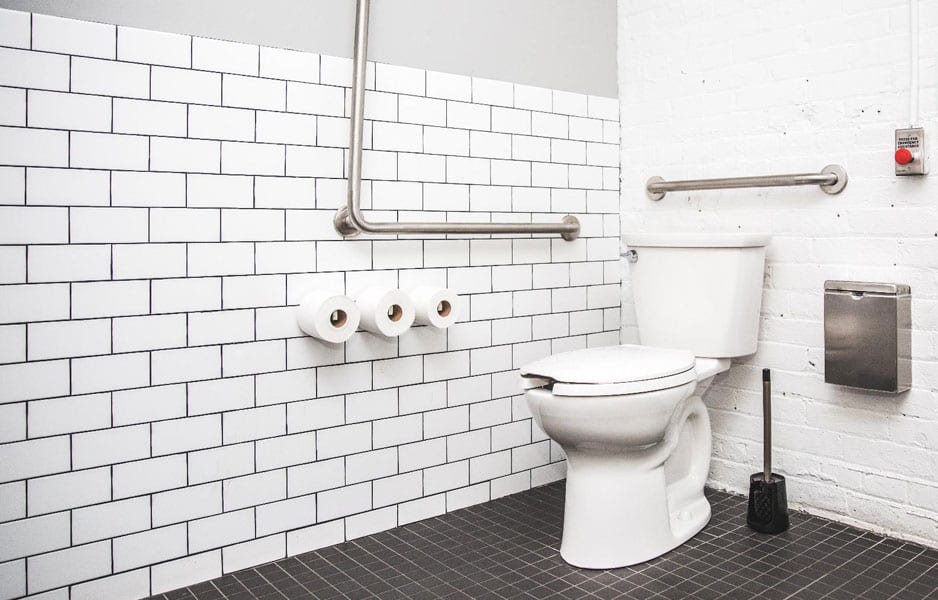ADA compliance is an increasingly important concern in many bathrooms today. Without it, bathroom accessibility for the many who rely on ADA conformity would be very difficult and in some cases, simply not possible. What is ADA conformity, and how is a bathroom made to achieve these important accessibility guidelines? Follow along for the scoop.
The Basics of ADA Compliance
ADA stands for Americans With Disabilities Act. This legal act, signed into law in 1990 and further refined in 2010, elaborates on how various areas, from bathrooms to websites, must be designed in order to allow for fair accessibility for those with disabilities. Most businesses must maintain compliance with the standards set forth in the ADA. In addition, many homes are being built, remodeled, and otherwise adapted to fit these standards and thus allow for universal accessibility. Having covered the basics of what the ADA is, for our purposes, we’ll now focus on ADA compliance in the bathroom area specifically.
Components of an ADA Compliant Bathroom
For a bathroom to be ADA compliant, it must be adapted to include a number of features that other bathrooms often don’t have. One of these features is the inclusion of grab bars around the toilet, sink, and shower and at the appropriate height. Another ADA feature is the inclusion of adequate space in the bathroom for a wheelchair to be able to spin 360 degrees and for the flooring to consist of a non-skid material.
ADA compliant lavatories need to utilize lever-style faucet handles so that they are much easier to operate. These lavatories must also be set at a height of 34″ above the floor for wheelchair accessibility. This allows for someone in a wheelchair to be able to roll right up to the sink and have clearance beneath it for their legs and the chair.
The proper toilet is also very important to ADA compliance in a bathroom. Also known as handicap toilets, these must utilize a seat that sets between 17 and 19 inches above the floor. They are also generally elongated as opposed to round.
Yet another important component to an ADA compliant bathroom is that of the shower setup. While needing the appropriate grab bars for safety, they must also allow for a wheelchair to roll in freely, without obstruction. They must also utilize a handheld shower wand setup for easy showering from a seated position. Additionally, an ADA approved shower must utilize a lever style of faucet handle. In some cases, a collapsible shower chair is also a necessity.
There are several other standards that make a bathroom fully ADA compliant as well. If the bathroom uses a hand drier, for example, that hand drier must be installed at an accessible height of between 38″ and 48″ above the floor. Other bathroom ADA components include the presence of adequate lighting and a doorway that is wide enough for wheelchair access, among other requirements.
At E Dennis, we know what it takes to fully adapt a bathroom to an ADA compliant and very comfortable and modernized area of the home or business. We are a full-spectrum plumbing service that knows no limits when it comes to plumbing capabilities. Whether you need expert ADA installation services or are simply looking for an expert consultation on what it would take to make your bathroom ADA compliant, we’ve got you covered. Give us a call today, and experience the best plumbing service in Atlanta and beyond.




